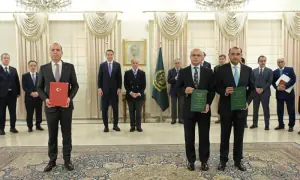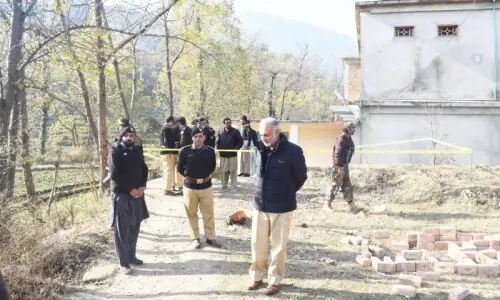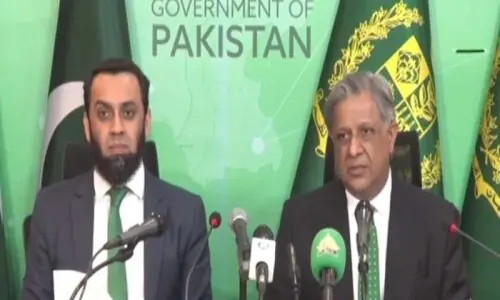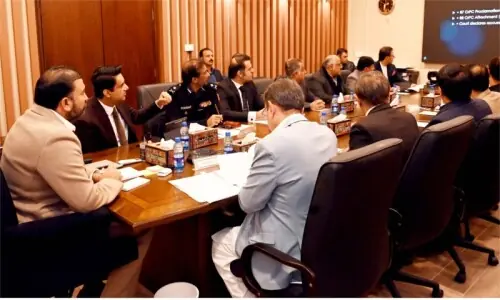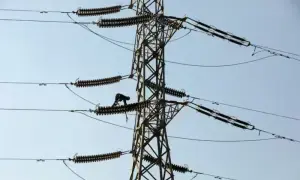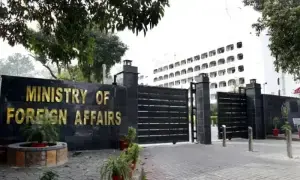When you think of big bucks, what industries come to your mind? Probably finance or technology? For the more old-school people, maybe it would be real estate or some sort of trading business. While exceptions always exist, some sectors are not typically associated with money. Education is probably the greatest example, in part because the state traditionally provided it for free.
Since then, times have changed, and for better or worse, education has been privatised around the world. The same holds true for the private republic of Pakistan, where the state has spectacularly failed in performing its duty, forcing households to bear yet another burden out of pocket if they want their kids to move up the social ladder. As of FY23, more than 46 per cent of the students in the country were enrolled in private institutions.
Despite this, the education business seems to be lacking a little. This is not to suggest that there aren’t big bucks involved or that their financial performance is subpar, but it definitely doesn’t appear to be capital-worthy. Between 2020 and 2024, the sector has attracted gross foreign direct investment of only $43.3 million — or a mere 0.3pc of the aggregate inflows in Pakistan.
The situation doesn’t drastically improve when you limit the lens locally. Over the last five fiscal years, the education sector has accounted for an average of just 0.5pc of outstanding private business loans through scheduled banks.
Loans to the sector surged to Rs182.1bn in October from about Rs28bn in September as banks looked for ADR loopholes
However, something changed a few months ago and all of a sudden, education apparently became one of the most capital-worthy avenues for funds in the country. From almost Rs28 billion in September 2024, scheduled banks’ loans to the sector surged to Rs182.1bn by October before settling in at Rs180.9bn. That’s a lot of money and a major jump.
So what exactly happened, and where did all the money go? Well, there is a short answer and a long one. If you are short of time, this was likely just a window-dressing exercise as banks sought new “borrowers” in order to avoid the erstwhile tax on advances-to-deposits (ADR) of under 50pc. By August end, the industry stood at a record low of 38.4pc, leaving a Rs4 trillion deficit with just four months left.
The moment demanded speed and innovation — two things bankers are known for — so they rushed to find new and old borrowers to avoid the additional tax. As a result, credit activity picked up at a pace like never before, with multiple sectors, including the usual non-banking financial institutes and manufacturing, benefitting from the bonanza. But when it rains, it pours with some trickling down to traditionally less attractive industries like education.
In essence, the story ends here. But if you are one for fun facts and would like to understand just how insane the numbers are, carry on.
To put the lending frenzy in context, we looked at other sectoral indicators. For starters, education businesses have maintained average deposits of Rs101.8bn between FY20 and FY24, resulting in a loan-to-deposit ratio of 29pc. As a share of the sectoral gross domestic product, financing averaged 1.8pc.
But in October, everything changed: the sectoral ADR surged to 136.1pc before rising further to 154.9pc, while financing-to-GDP reached 8pc. Luckily, the State Bank’s detailed reporting allows for analysis at the sub-category level, with classifications including pre-primary, general secondary, technical and vocational, higher education, sports and recreation, cultural education, support services, and an “other” category.
Funnily, but unsurprisingly, the entirety of new financing was directed toward the “other” category, which basically incorporates continuing vocational and non-formal education like upskilling courses or sports classes. The question naturally arises: how big is it really? Other than “big enough”, the answer may not be as precise.
In terms of deposits, the two largest segments within the sector are higher and pre & primary education. “Other” comes in a somewhat distant third. By number of institutes, the trend was slightly similar — in part thanks to the existence of state provision — with primary and secondary schools naturally the largest category.
Unfortunately, there is no data on how many “other” education institutes exist, but at least anecdotally, that number is not going to be too high. That said, there definitely has been an upsurge in such organisations lately. Think of those upskilling platforms teaching you how to earn dollars through Amazon or Upwork. But it’s highly unlikely that they would be 1) big enough already to absorb such liquidity or 2) possibly even documented to clear banks’ know-your-customer requirements.
Let’s expand the “big enough” bit. In the last 10 quarters, the average outstanding loan amount to education businesses is Rs15.6m while the number of borrowers is almost 2,100. That means that for banks to lend so much capital to the sector, it requires either the volumes or the mean to go up substantially in an order of magnitude.
Based on this September’s 1,760, banks needed to find 9,620 additional borrowers during the last quarter. The only problem is that there aren’t enough education companies registered with the Securities and Exchange Commission of Pakistan. Maybe some of the beneficiaries were those without formal incorporation? Alternatively, the mean size of the loan should have surged to Rs102.8m.
This whole saga is Goodhart’s Law in its purest form: the moment ADR became a target for taxation, it stopped being a meaningful measure of banking depth in promoting credit activity. That’s how it usually happens with such hard cut-offs, unless, of course, you are talking about lending to small and medium businesses or women. Somehow, even Goodhart’s Law fails there.
Published in Dawn, The Business and Finance Weekly, January 20th, 2025





